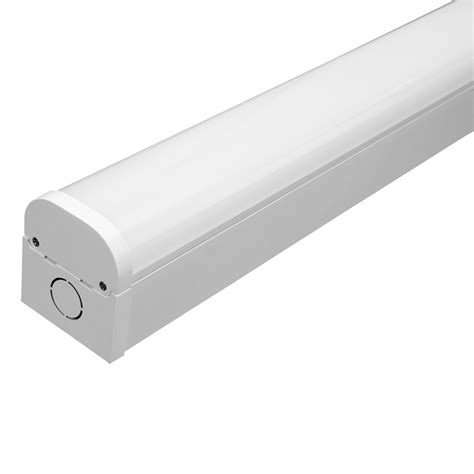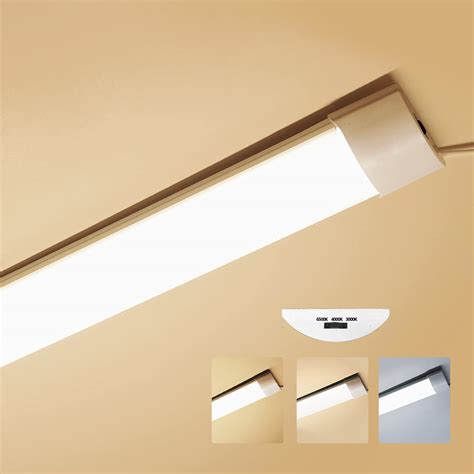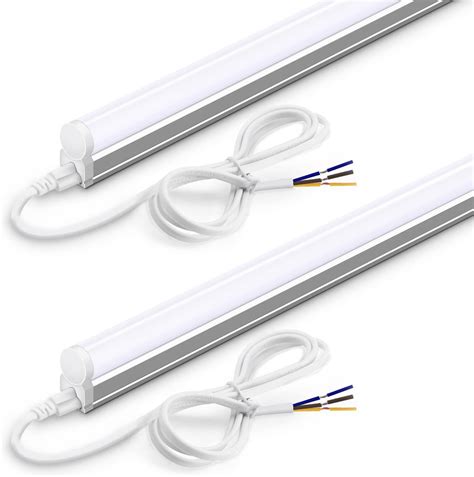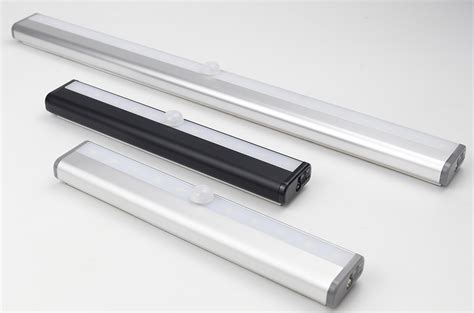Master professional Batten Light installation techniques and maximize energy efficiency with 2024's top tips. Discover how to select, position, and optimize fixtures for superior illumination and cost savings.

Key Takeaways
This guide provides essential insights for maximizing the performance and efficiency of batten lighting systems in 2024. Understanding the core installation principles ensures safety and longevity, while selecting the appropriate fixture type—considering factors like IP rating for moisture resistance and Color Rendering Index (CRI) for accurate color perception—is fundamental to achieving the desired lighting quality and application suitability. Strategic positioning significantly impacts illumination effectiveness; factors such as mounting height, spacing between units, and the reflectance of room surfaces must be carefully evaluated to eliminate shadows and dark spots, ensuring uniform light distribution critical for task areas.
Furthermore, implementing the latest efficiency optimization techniques is paramount for reducing operational costs. This involves leveraging modern LED technology with high lumens-per-watt ratios, integrating smart controls like occupancy sensors and daylight harvesting systems, and adopting scheduled dimming protocols. Critically, the synergy between correct fixture selection, optimal placement, and advanced control strategies delivers the most substantial energy savings and cost reductions over the fixture’s lifespan.
Proper spacing and height calculation during installation are non-negotiable for achieving uniform illumination and avoiding costly rework. Neglecting these fundamentals can undermine even the most efficient fixture.
Comparison of Common Batten Fixture Types (Typical Applications):
| Fixture Characteristic | Standard LED Batten | High-Output LED Batten | Vapor Tight LED Batten | Linear Suspended Batten |
|---|---|---|---|---|
| Best Suited For | General indoor areas (offices, corridors) | Warehouses, workshops, high-ceiling spaces | Damp/wet locations (garages, cold storage, washdown areas) | Retail spaces, offices requiring aesthetic integration |
| Key Advantage | Cost-effective, easy installation | High lumen output, better light penetration | Sealed design (IP65/IP66), durable | Enhanced aesthetics, diffuse light distribution |
| Typical Mounting | Surface, Recessed, Suspended | Surface, Suspended | Surface, Suspended | Suspended |

Batten Light Installation Fundamentals
Proper installation forms the critical foundation for achieving optimal performance and longevity from batten lighting systems. Before commencing, ensure the mounting surface is clean, level, and structurally sound to support the fixture’s weight securely. Correct wiring connections are paramount; always follow the manufacturer’s specific instructions and adhere strictly to local electrical codes to prevent hazards. Typically, this involves connecting the live, neutral, and earth wires from the supply to the corresponding terminals within the batten’s connection plate, often secured using terminal blocks or screw connectors. Crucially, isolate the circuit at the mains before starting any electrical work. Mounting methods vary – some battens utilize direct screw fixing through pre-drilled holes into the ceiling or surface, while others may employ mounting clips or brackets supplied with the unit. Ensuring the fixture sits flush and level against the surface avoids light gaps and potential vibration issues. Thoroughly testing the installation for secure mounting and correct electrical function before finalizing any covers or diffusers is an essential safety and quality control step.

Choosing the Right Batten Fixtures
Selecting the appropriate batten fixtures is crucial for achieving both desired illumination levels and long-term energy efficiency. Key considerations include the required lumen output, which depends heavily on the room’s size and intended function; a warehouse demands significantly brighter lighting than a storage closet. Simultaneously, the color temperature, measured in Kelvin, impacts the ambiance – warmer tones (2700K-3000K) suit offices or living areas, while cooler temperatures (4000K-5000K) enhance focus in workshops. For areas prone to moisture or dust, such as garages or basements, the fixture’s IP rating becomes essential, ensuring durability and safety. Furthermore, evaluating the lumens per watt ratio directly relates to energy consumption, making higher efficiency models a priority for cost savings. Compatibility with existing or planned control systems, like dimmers or motion sensors, should also influence the final choice to maximize functionality.

Optimal Positioning for Superior Illumination
Achieving truly effective illumination with batten fixtures hinges significantly on strategic placement. Correct positioning directly influences light distribution, minimizes shadows and glare, and enhances both visual comfort and task performance. Key considerations include the room’s primary function, ceiling height, and the specific tasks performed within the space. For general ambient lighting in standard ceiling heights, centering fixtures often provides balanced coverage. However, in task-oriented areas like kitchens or workshops, positioning batten lights directly above work surfaces ensures critical visibility. Maintaining appropriate spacing between fixtures is essential; a common guideline suggests spacing them at a distance approximately 1.5 times their mounting height from the ceiling to prevent dark spots and ensure uniform brightness across the entire area. Furthermore, aligning the direction of linear batten lights parallel to the main line of sight or the primary task area typically reduces glare and shadow interference, contributing substantially to the overall quality and efficiency of the lighting scheme.
2024 Efficiency Optimization Techniques
Moving beyond optimal positioning, maximizing the efficiency of your Batten Light installation hinges on leveraging the latest technological advancements and smart control strategies. In 2024, integrating dimmable drivers and pairing fixtures with smart lighting systems represent the forefront of energy conservation. These systems allow precise adjustment of light levels based on occupancy detected by sensors or predefined schedules, eliminating unnecessary energy consumption during unoccupied periods or daylight hours. Furthermore, selecting fixtures equipped with the highest efficacy LEDs and high-efficiency drivers directly translates to lower wattage requirements for the same lumen output, significantly reducing operational costs over the fixture’s lifespan. Implementing these techniques ensures your lighting solution delivers superior illumination while actively minimizing electricity usage and associated expenses.
Maximizing Energy Savings with Batten
Achieving significant energy savings with batten lighting hinges on selecting high-efficiency luminaires and implementing intelligent operational strategies. Primarily, opt for LED batten fixtures boasting high luminaire efficacy ratings (typically exceeding 130 lm/W for premium models) and a power factor (PF) of 0.9 or greater; this ensures minimal energy is wasted as heat or reactive power. Integrating smart controls is paramount. Occupancy sensors drastically reduce runtime in unoccupied areas like storage rooms or corridors, while daylight harvesting systems automatically dim or switch off lights near windows when sufficient natural light is available, leveraging the typically linear layout of battens for zoned control. Furthermore, ensuring the luminaires have excellent thermal management extends the operational lifespan of the LEDs and maintains their high efficacy over time, preventing the gradual increase in energy consumption seen in poorly cooled fixtures. Regular maintenance, though minimal for quality LED battens, involves simple cleaning to prevent dust accumulation that can diminish light output, ensuring the system operates at peak efficiency. Collectively, these measures transform batten lights from simple illumination sources into powerful tools for reducing electricity consumption and associated costs, directly contributing to lower operational expenses.
Cost Reduction Through Lighting Mastery
Beyond immediate energy savings, mastering Batten light installation and operation translates directly into significant, long-term cost reductions. Strategic choices, such as selecting fixtures with high luminous efficacy and optimal colour rendering, minimize the need for excessive fittings or frequent replacements, reducing both capital and maintenance expenditure. Integrating smart controls, including dimmers and occupancy sensors, further slashes energy consumption by ensuring lights operate only when and at the intensity needed. Properly planned layouts, avoiding over-illumination and leveraging the inherent efficiency of Batten lights’ even distribution, prevent wasted electricity. Crucially, adhering to a disciplined maintenance schedule – cleaning diffusers and checking connections – sustains peak performance and extends fixture lifespan, protecting your investment. This holistic approach transforms efficient lighting into a powerful lever for lowering operational expenditure.
Conclusion
Ultimately, mastering the selection, installation, and positioning of Batten Lights empowers users to achieve significant, tangible benefits. By applying the fundamental installation techniques and strategic positioning strategies discussed, superior illumination quality is not just possible but predictable. Furthermore, implementing the 2024 efficiency optimization techniques directly translates into measurable energy savings. This deliberate approach to Batten Light usage ensures environments are optimally lit while simultaneously minimizing operational costs. The integration of these practices represents a practical and effective pathway to enhanced lighting performance and substantial long-term cost reduction.
Frequently Asked Questions
What factors determine optimal batten light spacing?
Spacing depends on ceiling height and required lux levels. Generally, maintain 1.5 times the mounting height between fixtures for uniform illumination. Use photometric data from manufacturers to validate layouts.
How do LED batten lights reduce energy costs?
Modern LED battens consume 50-60% less power than fluorescents while delivering higher lumens per watt. Their extended lifespan (typically 50,000 hours) drastically cuts maintenance and replacement expenses over time.
Can existing fluorescent batten fittings accommodate LED tubes?
Many fixtures support direct LED tube retrofits with compatible ballasts or bypass kits. Always verify voltage compatibility and consult manufacturer guidelines before conversion to ensure safety and warranty compliance.
What IP rating is suitable for garage or workshop batten lights?
Select IP65-rated fixtures for dustproof and water-jet resistant performance in workshops. For humid environments like laundries, IP44 or higher provides adequate moisture protection against condensation damage.
How frequently should batten light maintenance occur?
Schedule bi-annual cleaning of diffusers and reflectors to maintain >95% light output. Inspect mounting hardware annually for stability, and check electrical connections every three years to prevent potential hazards.





